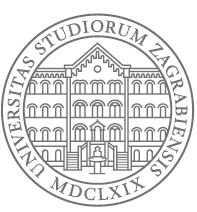| Sažetak | Ovim radom pod naslovom „Početno opismenjavanje na hrvatskom jeziku u prvoj polovici 19. stoljeća“ obrađuje se tema povijesnoga početnog opismenjavanja, odnosno početnoga čitanja i pisanja u prošlosti, točnije u 19. stoljeću. Definira se i opisuje početno opismenjavanje, promišlja se njegova važnost u određenom povijesnom trenutku te se navode i opisuju udžbenici po kojima se ono provodilo, tj. početnice ključne za proces opismenjavanja. Teorijski pristupi fenomenima pismenosti, rane pismenosti, početnoga opismenjavanja, odnosno početnoga čitanja i pisanja bit će razmatrani u prvom teorijskom dijelu rada. Tema koja se ovim radom obrađuje nužno iziskuje i bavljenje poviješću školstva i sustava školovanja u 19. stoljeću. Tako će kontekstualizacija teme prikazom povijesti hrvatskoga školstva u 19. stoljeću činiti drugi teorijski dio rada. U trećemu dijelu rada donosi se opis i analiza jedne izabrane početnice korištene tijekom 19. stoljeća u Hrvatskoj. Analiza je usmjerena na njezin sadržaj – uvid u to što se u tadašnje doba smatralo važnim i nužnim za ulazak u svijet pismenosti, na razumijevanje namjene početnice te na razumijevanje metodike početnoga čitanja i pisanja prema tom udžbeniku. Pozornost će se posvetiti i razmišljanju u kojoj je mjeri sadržaj tekstova koji se nalaze u početnici bio prilagođen dječjoj dobi, interesima i stupnju razvoja. Neki od zaključaka do kojih je analiza dovela pokazuju da je tijekom 19. stoljeća prevladavao koncept početnoga opismenjavanja koji je započinjao početnim čitanjem, a tek se potom uvodilo pisanje, te da se opismenjavalo gotovo bez iznimke metodom sricanja. Većinom su se tekstovi obraćali djeci te na primjerima iz njima bliska životnog iskustva poučavali o dobru ponašanju, o moralnim vrijednostima, o vrlinama koje valja izgraditi. Ukratko, moralizatorska i poučna nota u tekstovima je značajno prisutna. Neke su od početnica bile pisane dvojezično i trojezično, što ukazuje na to da je u 19. stoljeću višejezičnost stvarnost života u mnogim hrvatskim krajevima i da su djeca rane školske dobi bila uključena u učenje dvaju jezika. Početnice koje su tiskane u 19. stoljeću postavile su temelje današnjim početnicama za učenike prvih razreda osnove škole. Važnost učenja slova, pisanja, čitanja, upoznavanja i istraživanja okoline, upoznavanje s određenim društvenim normama, ono je što se uči i danas. Danas se početnice temelje na navedenim smjernicama, no više su prilagođene djeci, njihovu stupnju razvoja i njihovim interesima. |
| Sažetak (engleski) | Under the title “The initial development of literacy in Croatian during the first half of the 19th century” this paper covers the topic of the initial historical development of literacy, i.e. initial reading and writing in the past – more specifically, the 19th century. The initial development of literacy is defined and described, its importance in a specific historical moment is reflected, and the textbooks used for its implementation, i.e. spelling books which were instrumental for the process of developing literacy, are listed and described. The theoretical approaches to the phenomena of literacy, early literacy, and the initial development of literacy, i.e. beginner reading and writing, will be investigated in the first theoretical part of the paper. The topic covered by this paper necessitates a discussion on the history of education and the educational system in the 19th century, as well. By providing a historical overview of Croatian education in the 19th century, this part of the contextualization of the topic will form the second theoretical part of the paper. The third part gives an analysis of select spelling books used in various parts of what was then Croatia during the 19th century. The analysis is directed at their contents – an insight into what was then considered important and necessary for entering the world of literacy, for understanding aimed spelling books (intended for only learning to read, only learning to write, or both), and understanding the methodology of beginner reading and writing according to those textbooks. Attention will be given to the reflection of the degree to which the content of the spelling books was adapted to children’s age, interest, and their level of development. Some of the conclusions of this analysis show that the concept of initial literacy development, which began with beginner reading, only then to be followed by writing, and which was without exception conducted through spelling, prevailed during the 19th century. The texts were mostly directed at children and, with the help of examples from life experiences near to them, taught good behaviour, moral values, and virtues needed to be developed. In short, the moral and educational tone is significantly present in the texts. Some of the spelling books were bilingual or trilingual, which indicates that multilingualism was prevalent in everyday life in many Croatian areas in the 19th century and that children of the early school age were engaged in learning two languages. The spelling books printed in the 19th century set the foundation of spelling books for first graders in primary schools today. The importance of learning letters, writing, reading, acquaintance with and exploration of the environment, familiarisation with certain social norms are all what is still learned today. Spelling books today are based on the listed guidelines, but are more adapted to children, their level of development, and their interests. |


